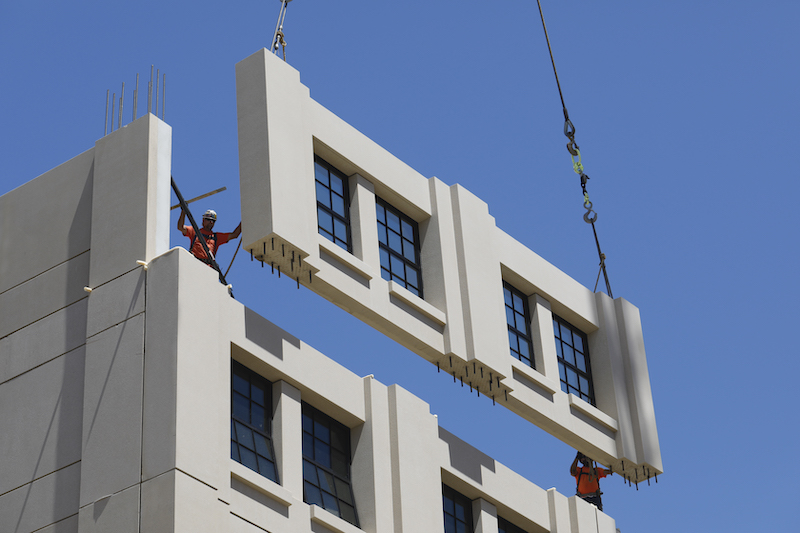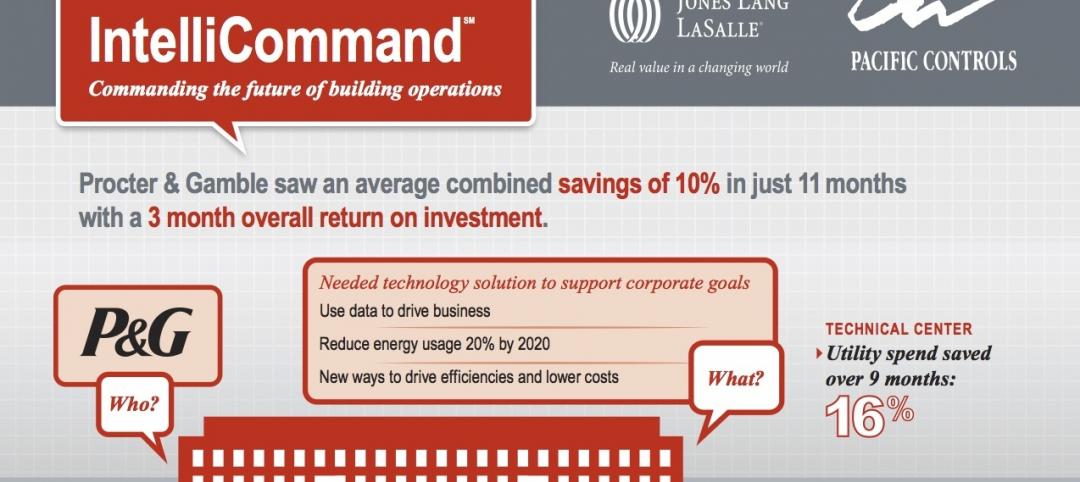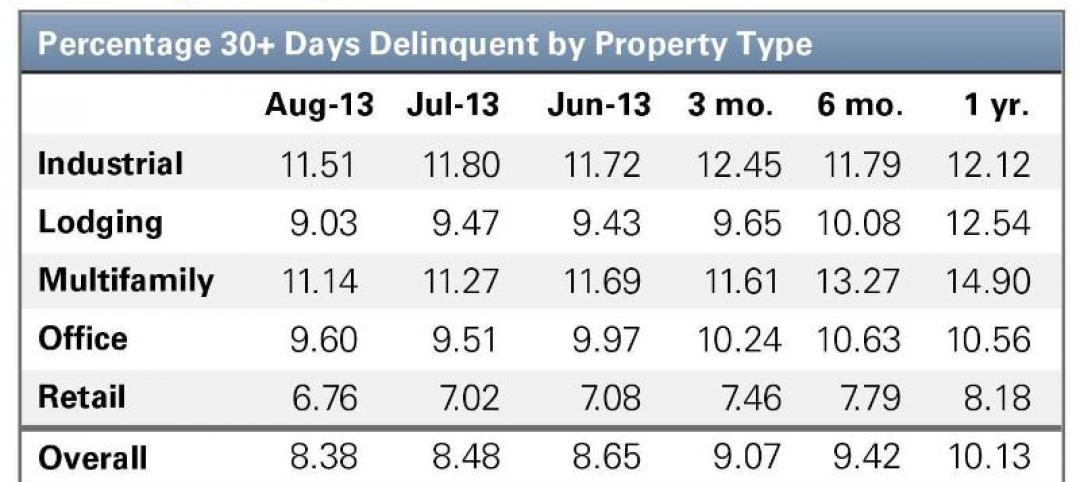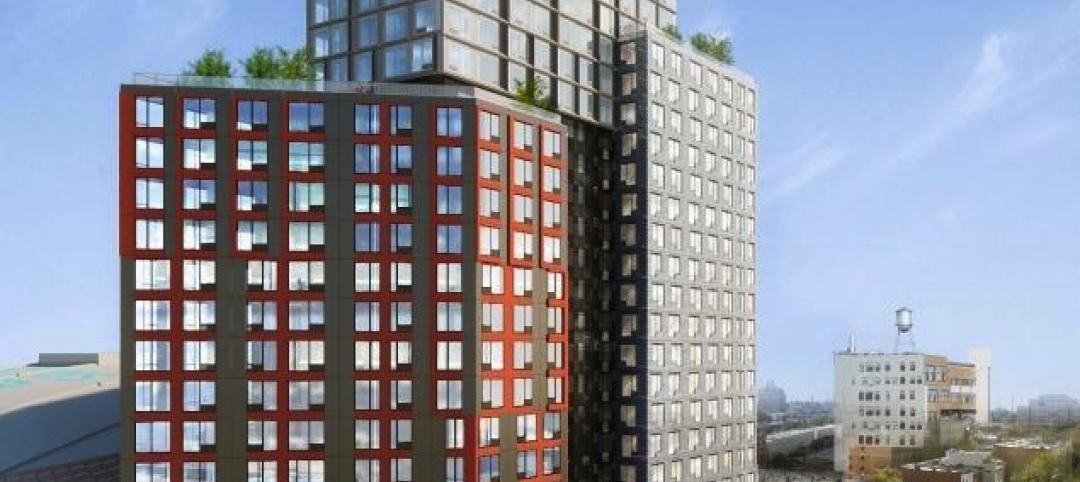Gensler, the global architecture firm, is currently working on nine citizenM-branded hotels across North America, including a 264-key hotel in the South Lake Union neighborhood of Seattle that, when it opens in May, will be that city’s first fully modular hotel.
Gensler is among a growing number of AEC firms that are incorporating prefabrication and modular construction into their project design. The hotel sector has been particularly receptive to modular construction, most notably Marriott International, which since 2015 has included prefab guestrooms and bathrooms in more than 50 of its projects.
The Building Team that worked on the citizenM project in Seattle stacked seven to eight modules per day, on average, and set all of the rooms in 89 days, reducing the project’s schedule by four months, and reducing construction waste by as much as 60%. (Mortenson is the GC on this hotel project.)
The rooms themselves are small; the width of a king-size bed and only 160 sf. But they are designed and built to luxury-brand standards with the latest control technology. The rooms will also include personal tablets that allow guests to track the hotel’s real-time sustainability performance.
ALSO SEE: Meet the masters of offsite construction
“Prefabrication has a lot of positive impacts: on construction speed, improved quality and construction tolerances, on people and processes,” observes Daniel Glaessl, Design Director for Gensler in its San Francisco Bay Area office.
He says that his office is using prefabrication “as often as possible.” But there are some challenges: manufacturing plants can be in remote locations, for one. (The modules for the citizenM hotel in Seattle were shipped to the Port of Seattle from a Europe-based supplier.) Glaessl adds that prefab requires more preplanning and longer lead times, and the components need to be designed so they can fit onto trucks for transport.
Clark Pacific sees growth in demand for prefabrication and modular construction solutions
As prefabrication and modular construction become more popular in the U.S., building teams and their clients have been turning to domestic supply partners. For example, Clark Pacific, a components provider that has operated out of West Sacramento, Calif., since 1963, is working with Gensler’s Seattle office through design assist on a separate citizenM hotel in San Francisco.
Clark Pacific is the single source for that building’s envelope, utilizing the supplier’s Infinite Panel, a standard frame and connection system that meets or exceeds Title 24, water, vapor, sound and fire code requirements. This project is entering the production phase in Clark Pacific’s Northern California plant that will prefabricate the hotel’s façade.
Façade manufacture is how Clark Pacific got started, says Mickey Ankheli, AIA, its Director of Architecture/Design-Build. But over the years it has expanded its product variety and delivery system.
Clark Pacific’s plant in Woodland, Calif., which sits on 120 acres, focuses on structural components and products for its glass division. The company’s 2-million-sf plant in Fontana, Calif., makes Infinite Panel and Architectural Precast products. And its factory in Adelanto, Calif., makes structural components.
Ankheli says his company is seeing a “lot of traction” in demand for prefabricated products from the multifamily and campus housing sectors. That demand is strengthening, he posits, because of the industry’s labor shortage. And prefab assembly is particularly well suited for tight urban settings.
But, he acknowledges, prefabricated delivery requires that design decisions “be locked in earlier, and architects need to understand these parameters.” His company now positions itself as a provider of turnkey design-build.
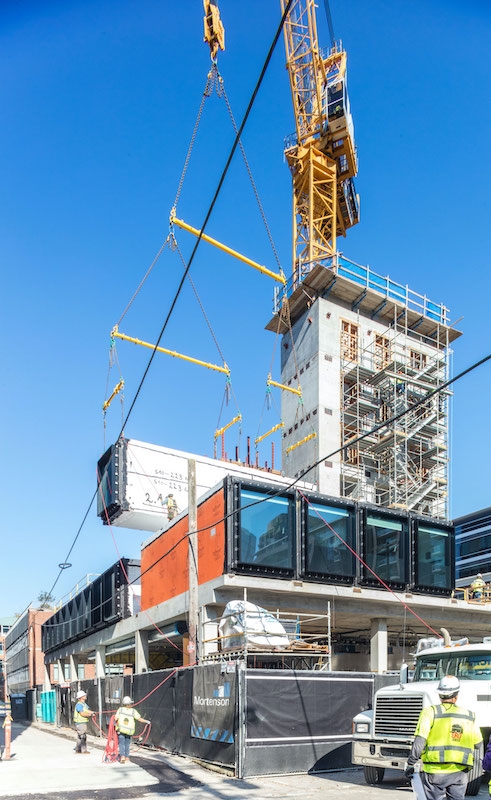
The construction of a citizenM hotel in Seattle used prefabricated modules that were placed seven to eight per day. Image: Gensler and Heywood Chen
“Prefab works best on projects that have a lot of iteration in their design,” says Glaessl. So design teams “need to be disciplined.”
That doesn’t mean there’s no flexibility in prefabrication or modular construction. Gensler and Clark Pacific are working on a parking structure for a technology client in the Bay Area. The structure, which will have a maximum capacity of 2,055 parking stalls, is being designed for adaptive reuse as office space, if market conditions warrant such a shift in use.
Ankheli recalls that, in midstream, the parking structure’s client wanted changes that included adding an athletic field to the project. While Clark Pacific had to retool a bit, Ankheli asserts that prefabrication actually made it easier to meet the client’s wishes.
The company, which sells into the west coast, including Arizona and Nevada, touts the resilience of its components, especially during seismic events. Clark Pacific sees its growth coming primarily from greater efficiency in serving its existing markets, says Ankheli.
Related Stories
| Sep 11, 2013
BUILDINGChicago eShow Daily – Day 3 coverage
Day 3 coverage of the BUILDINGChicago/Greening the Heartland conference and expo, taking place this week at the Holiday Inn Chicago Mart Plaza.
| Sep 10, 2013
BUILDINGChicago eShow Daily – Day 2 coverage
The BD+C editorial team brings you this real-time coverage of day 2 of the BUILDINGChicago/Greening the Heartland conference and expo taking place this week at the Holiday Inn Chicago Mart Plaza.
| Sep 4, 2013
Smart building technology: Talking results at the BUILDINGChicago/ Greening the Heartland show
Recent advancements in technology are allowing owners to connect with facilities as never before, leveraging existing automation systems to achieve cost-effective energy improvements. This BUILDINGChicago presentation will feature Procter & Gamble’s smart building management program.
| Sep 3, 2013
Delinquency rate for commercial real estate loans at lowest level in three years
The delinquency rate for US commercial real estate loans in CMBS dropped for the third straight month to 8.38%. This represents a 10-basis-point drop since July's reading and a 175-basis-point improvement from a year ago.
| Aug 26, 2013
What you missed last week: Architecture billings up again; record year for hotel renovations; nation's most expensive real estate markets
BD+C's roundup of the top construction market news for the week of August 18 includes the latest architecture billings index from AIA and a BOMA study on the nation's most and least expensive commercial real estate markets.
| Aug 22, 2013
Energy-efficient glazing technology [AIA Course]
This course discuses the latest technological advances in glazing, which make possible ever more efficient enclosures with ever greater glazed area.
| Aug 14, 2013
Green Building Report [2013 Giants 300 Report]
Building Design+Construction's rankings of the nation's largest green design and construction firms.
| Jul 29, 2013
2013 Giants 300 Report
The editors of Building Design+Construction magazine present the findings of the annual Giants 300 Report, which ranks the leading firms in the AEC industry.
| Jul 19, 2013
Renovation, adaptive reuse stay strong, providing fertile ground for growth [2013 Giants 300 Report]
Increasingly, owners recognize that existing buildings represent a considerable resource in embodied energy, which can often be leveraged for lower front-end costs and a faster turnaround than new construction.
| Jul 11, 2013
Lawsuit challenges modular apartment project in New York City
A plan to build pre-fab apartment buildings at Atlantic Yards in Brooklyn, N.Y., has been challenged by a lawsuit filed by the Plumbing Foundation in Manhattan Supreme Court.


